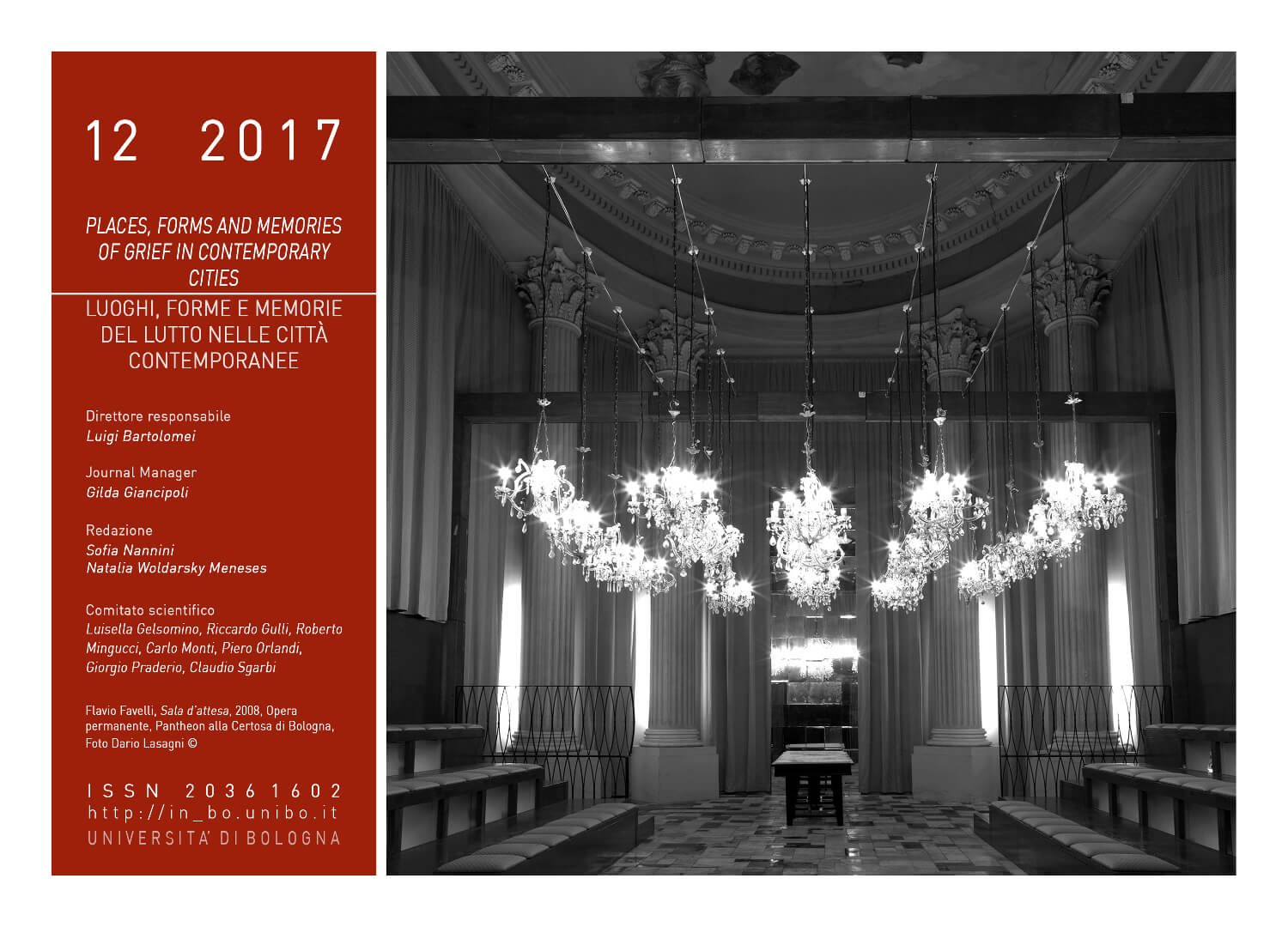The Current Funeral Architecture as the Heritage of the 20th Century and its Routing in the 21st Century in the Czech Republic
DOI:
https://doi.org/10.6092/issn.2036-1602/7858Keywords:
Ceremony hall, Czech Republic, Czechoslovakia, Cremation, SecularizationAbstract
“The life of the dead is stored in the memory of the living.” These words said Roman speaker, philosopher and writer Marcus Tullius Cicero two thousand years ago, but they are still up to date. The Christian doctrine later strengthen these words and they are embedded in sacral structures, which previously where used for the last farewell ceremonies, inter alia. Major changes came during the 19th Century in Czech Lands. The cremation is massively promoted for better hygiene and as the expression of human progress. Josephine reforms and the onset of secularization started the process of the transformation of the last farewell ceremonies ongoing during whole 20th Century in the Czechoslovakia and later the Czech Republic. Massive construction of crematories and funeral halls (without cremation), as well as the political program of the communist regime, supported contemporary popularity of secular ceremonies and cremation. These changes had a considerable influence to the formation and transformation of cemeteries and their position in urban structure.References
Nešporová, O. Obřady loučení se zesnulými: sekulární, náboženské nebo raději žádné pohřby?. Sociální studia, vol. 8, no. 2, pp. 57-85, 2011
Kadeřabek, m.; Hilgert, l., a kol. Výstavba smutečních síní adaptací nebo přístavbou, Společnost přátel žehu, Praha 1967
Anon. Ottův slovník naučný. Díl 5. U-Vosín. Prague, 1907
Hilgert, L., člen technické komise SPŽ. Smuteční síně výstavba a zařízení. Společnost přátel žehu, Praha 1965
Špatenková, N. et al. O posledních věcech člověka. Galén. 2014
Kovář, J.; Peřínková, N.; Špatenková, N., a kol. Hřbitov jako veřejný prostor, first ed., Gasset and VŠB – Ostrava, Praha, 2014
Svobodová, M. Krematorium. Artefaktum, Praha. 2013
Klaus, V. A Kol., Loužek M. (ed.), Sto let od počátku první světové války, first ed., Institut Václava Klause, Praha, 2014
Klaassens, M., & Groote, P. (2014). Postmodern crematoria in the Netherlands: a search for a final sense of place. Mortality, 1, 1-21
Frolíková Palánová, K., Juračka O. 2017 Cultural influences conditioning the development of funeral architecture, its current status and its future direction. In Al Ali, Platko, P. (eds), Advances and Trends in Engineerign Sciences and Technologies II. Vyd. 1
London: Taylor and Francis Group, 2017, s. 599-604
O Juračka. Krematorium s inovovaným pohledem na pohřební kulturu. Ostrava, 2016. Diplomová práce. VŠB – TU Ostrava. Fakulta stavební. Vedoucí práce K. F. Palánová.
Taufer, F. Věstník “Krematoria”, Spolku pro spalování mrtvých. Ant. Reise. Praha-Vyšehrad. 1923, 1926, 1927, 1928, 1930, 1931, 1932, 1934, 1935, 1951
Toman, J. Rozptyl a vsyp, Pokrokové ukládání zpopelněných ostatků. Společnost přátel žehu, Praha 1983.
International Cremation Statistics 2014. In http://www.effs.eu/cms/fileadmin/members_only/documents/news_articles/Cremation_statistist_2014.pdf
The Act of Parliament 193/2017 changes the Act No 256/2001 Sb. about funeral and burial services and about the change in some of the Acts in version of subsequent regulations and further Acts of Law concerned. The Czech Republic
Šmolík, J., a technická komise SPŽ. Výtvarné a technické doplňky urnových hájů a smutečních síní. Společnost přátel žehu, Praha 1968
Fiala, P., Hanuš, J., Katolická církev a totalitarismus v Českých zemích, first ed., Centrum pro studium demokracie a kultury, Brno, 2001
Downloads
Published
How to Cite
Issue
Section
License
Copyright (c) 2018 Klára Frolíková Palánová, Ondřej Juračka
Copyrights and publishing rights of all the texts on this journal belong to the respective authors without restrictions.
This journal is licensed under a Creative Commons Attribution-NonCommercial 4.0 International License (full legal code).
See also our Open Access Policy.
Metadata
All the metadata of the published material is released in the public domain and may be used by anyone free of charge. This includes references.
Metadata — including references — may be re-used in any medium without prior permission for both not-for-profit and for-profit purposes. We kindly ask users to provide a link to the original metadata record.







